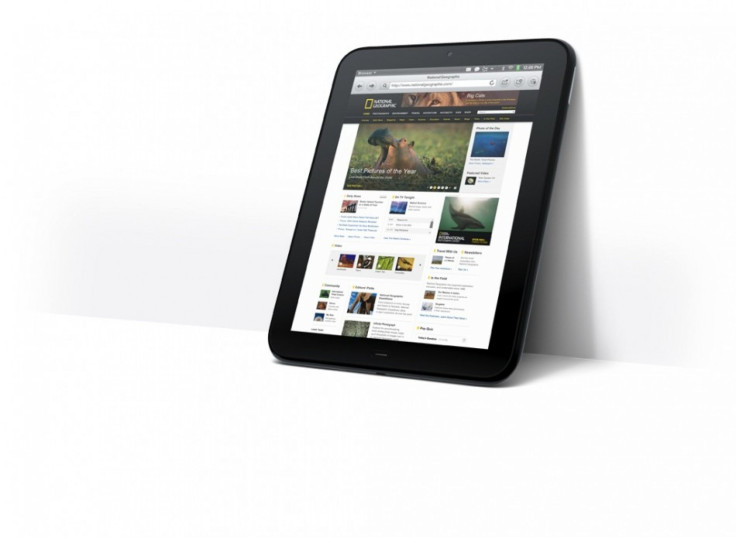ANALYSIS: Why HP TouchPad Will Fail Against iPad 2, Galaxy Tab and Other Tablets

The question is not whether the TouchPad is even capable of taking on the iPad 2. It's how big a dent the TouchPad will create in the sales of the iPad 2 and Galaxy Tab 10.1, which rule the roost in the tablet market.
Take a list of specifications offered by the TouchPad and compare it to Apple iPad 2's spec sheet, the balance apparently tilts in favor of the TouchPad. But the devil is in the details. On a lot of crucial points, the TouchPad comes a cropper against its more established rival.
FEATURES
HP says the TouchPad has got a big brain that gives you blazing speed, helps you go into the next level of multitasking and offers superior graphics performance.
The tablet is powered by the 1.2 GHz Qualcomm Snapdragon dual-core APQ8060 processor. It sports front-facing 1.3MP camera and digital microphone for live video calling as well as dual-band Wi-Fi.
It has Bluetooth1 wireless technology 2.1 + EDR with A2DP Stereo Bluetooth support. Some other features are LED backlit multi-touch display, 1024 x 768 resolution, 18-bit color depth, auto rotate, multi-touch glass display with a special coating for easier cleaning and abrasion resistance.
The TouchPad also boasts a light sensor, accelerometer, compass and gyroscope as well as audio playback, TV and video, a mail attachment support and integrated IM, SMS, and MMS7. The WebOS includes such features as a user-friendly interface, synergy and multitasking tools as well as the exhibition function.
Where the TouchPad scores against iPad 2 heavily is its ability to play Flash videos on the Web, a capacity that iPad 2 lacks. There are lots of iPad users who read books and check e-mail when traveling. For them, it makes a big difference if the device can support Flash. Another highly useful feature that users will like is the magnetic charging facility on TouchPad.
WHERE IT SINKS
Chiefly, the TouchPad's bulk can be an instant aesthetic turn-off. Apple brought to the table the art of making beautiful devices, a trait none of the competition has been able to replicate fully. HP fails in this too. Seen side by side, the TouchPad loses on aesthetics instantly, before even one gets into the details like its weight of 1.65 pounds and thickness of 13.7 mm.
It is also heavier than the 1.26 pound Galaxy Tab 10.1, and the 1.6 pound Motorola Xoom. There are leaner, meaner devices in the market. For example, Apple iPad 2 weighs only 1.3 pounds and is slimmer, with 8.8 mm thickness.
Secondly, HP's fancied WebOS 3.0, the operating system that runs the TouchPad, doesn't present anything new compared to Apple iOS and Google's Android. It has some fancy features like card view and functions named clever interface, synergy and multi-tasking, but it fails to impress as a unique proposition compelling users to switch from the iPad 2 or other myriad Android tablets.
Thirdly, the pricing of the tablet looks unimaginative. The popular feeling is that HP should have been more competitive in pricing the tablet. The TouchPad's success squarely depends on how many would-be iPad 2 customers it can wean away. Currently iPad 2 is the unchallenged leader in the market, enjoying about 90 percent of the tablet market share. Some tablet users think they might not buy a TouchPad even if it was priced $200 less than the iPad 2. Such is the loyalty that Apple commands in this segment.
Another area in which the TouchPad loses out against iPad 2 is connectivity. The TouchPad offers WiFi connectivity, and HP has promised that a 4G-enabled tablet will be launched later in the summer. Until that happens, the WIFi, 3G-enabled Apple iPad will continue to attract customers. It is puzzling why HP did not include 3G in its tablet.
Tech observers feel that HP passed up an opportunity to score over the iPad by giving the TouchPad better display than the iPad 2's. However, as it has transpired, the TouchPad has the same 9.7 inch display that iPad 2 sports. Besides, Motorola Xoom, Samsung Galaxy Tab 10.1 and Acer Iconia Tab A500 have 10.1-inch displays.
Another area in which the TouchPad falls short is the inadequacy of HP's App Catalog, which is a marketplace for third-party applications. HP's App Catalog, which has around 300 apps optimized for TouchPad, compares poorly to the app store for iPad 2, which has about 100,000 apps.
© Copyright IBTimes 2024. All rights reserved.











